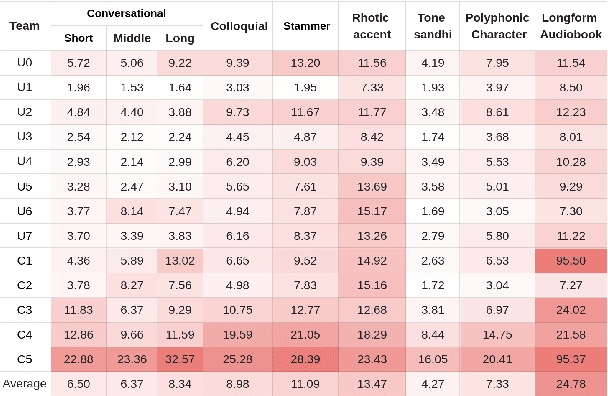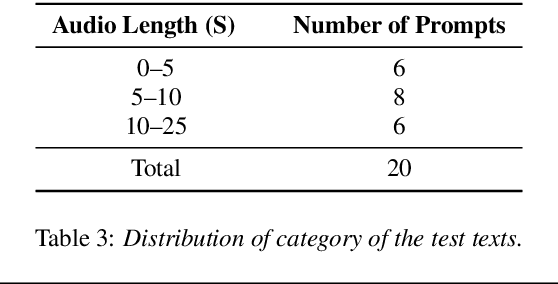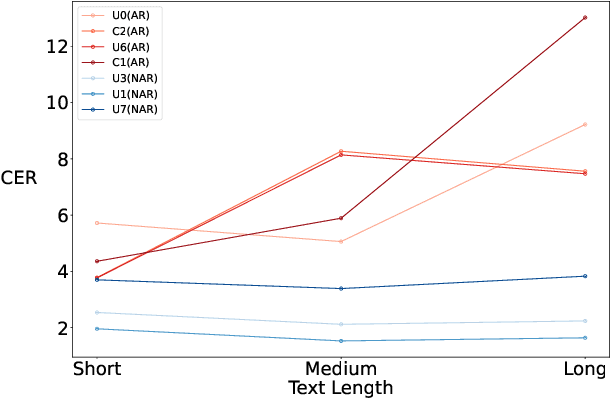Lei Luo
M4-SAR: A Multi-Resolution, Multi-Polarization, Multi-Scene, Multi-Source Dataset and Benchmark for Optical-SAR Fusion Object Detection
May 16, 2025Abstract:Single-source remote sensing object detection using optical or SAR images struggles in complex environments. Optical images offer rich textural details but are often affected by low-light, cloud-obscured, or low-resolution conditions, reducing the detection performance. SAR images are robust to weather, but suffer from speckle noise and limited semantic expressiveness. Optical and SAR images provide complementary advantages, and fusing them can significantly improve the detection accuracy. However, progress in this field is hindered by the lack of large-scale, standardized datasets. To address these challenges, we propose the first comprehensive dataset for optical-SAR fusion object detection, named Multi-resolution, Multi-polarization, Multi-scene, Multi-source SAR dataset (M4-SAR). It contains 112,184 precisely aligned image pairs and nearly one million labeled instances with arbitrary orientations, spanning six key categories. To enable standardized evaluation, we develop a unified benchmarking toolkit that integrates six state-of-the-art multi-source fusion methods. Furthermore, we propose E2E-OSDet, a novel end-to-end multi-source fusion detection framework that mitigates cross-domain discrepancies and establishes a robust baseline for future studies. Extensive experiments on M4-SAR demonstrate that fusing optical and SAR data can improve $mAP$ by 5.7\% over single-source inputs, with particularly significant gains in complex environments. The dataset and code are publicly available at https://github.com/wchao0601/M4-SAR.
Remote Photoplethysmography in Real-World and Extreme Lighting Scenarios
Mar 14, 2025Abstract:Physiological activities can be manifested by the sensitive changes in facial imaging. While they are barely observable to our eyes, computer vision manners can, and the derived remote photoplethysmography (rPPG) has shown considerable promise. However, existing studies mainly rely on spatial skin recognition and temporal rhythmic interactions, so they focus on identifying explicit features under ideal light conditions, but perform poorly in-the-wild with intricate obstacles and extreme illumination exposure. In this paper, we propose an end-to-end video transformer model for rPPG. It strives to eliminate complex and unknown external time-varying interferences, whether they are sufficient to occupy subtle biosignal amplitudes or exist as periodic perturbations that hinder network training. In the specific implementation, we utilize global interference sharing, subject background reference, and self-supervised disentanglement to eliminate interference, and further guide learning based on spatiotemporal filtering, reconstruction guidance, and frequency domain and biological prior constraints to achieve effective rPPG. To the best of our knowledge, this is the first robust rPPG model for real outdoor scenarios based on natural face videos, and is lightweight to deploy. Extensive experiments show the competitiveness and performance of our model in rPPG prediction across datasets and scenes.
Diff-Reg v2: Diffusion-Based Matching Matrix Estimation for Image Matching and 3D Registration
Mar 07, 2025



Abstract:Establishing reliable correspondences is crucial for all registration tasks, including 2D image registration, 3D point cloud registration, and 2D-3D image-to-point cloud registration. However, these tasks are often complicated by challenges such as scale inconsistencies, symmetry, and large deformations, which can lead to ambiguous matches. Previous feature-based and correspondence-based methods typically rely on geometric or semantic features to generate or polish initial potential correspondences. Some methods typically leverage specific geometric priors, such as topological preservation, to devise diverse and innovative strategies tailored to a given enhancement goal, which cannot be exhaustively enumerated. Additionally, many previous approaches rely on a single-step prediction head, which can struggle with local minima in complex matching scenarios. To address these challenges, we introduce an innovative paradigm that leverages a diffusion model in matrix space for robust matching matrix estimation. Our model treats correspondence estimation as a denoising diffusion process in the matching matrix space, gradually refining the intermediate matching matrix to the optimal one. Specifically, we apply the diffusion model in the doubly stochastic matrix space for 3D-3D and 2D-3D registration tasks. In the 2D image registration task, we deploy the diffusion model in a matrix subspace where dual-softmax projection regularization is applied. For all three registration tasks, we provide adaptive matching matrix embedding implementations tailored to the specific characteristics of each task while maintaining a consistent "match-to-warp" encoding pattern. Furthermore, we adopt a lightweight design for the denoising module. In inference, once points or image features are extracted and fixed, this module performs multi-step denoising predictions through reverse sampling.
Towards Better Spherical Sliced-Wasserstein Distance Learning with Data-Adaptive Discriminative Projection Direction
Dec 26, 2024Abstract:Spherical Sliced-Wasserstein (SSW) has recently been proposed to measure the discrepancy between spherical data distributions in various fields, such as geology, medical domains, computer vision, and deep representation learning. However, in the original SSW, all projection directions are treated equally, which is too idealistic and cannot accurately reflect the importance of different projection directions for various data distributions. To address this issue, we propose a novel data-adaptive Discriminative Spherical Sliced-Wasserstein (DSSW) distance, which utilizes a projected energy function to determine the discriminative projection direction for SSW. In our new DSSW, we introduce two types of projected energy functions to generate the weights for projection directions with complete theoretical guarantees. The first type employs a non-parametric deterministic function that transforms the projected Wasserstein distance into its corresponding weight in each projection direction. This improves the performance of the original SSW distance with negligible additional computational overhead. The second type utilizes a neural network-induced function that learns the projection direction weight through a parameterized neural network based on data projections. This further enhances the performance of the original SSW distance with less extra computational overhead. Finally, we evaluate the performance of our proposed DSSW by comparing it with several state-of-the-art methods across a variety of machine learning tasks, including gradient flows, density estimation on real earth data, and self-supervised learning.
United Domain Cognition Network for Salient Object Detection in Optical Remote Sensing Images
Nov 11, 2024Abstract:Recently, deep learning-based salient object detection (SOD) in optical remote sensing images (ORSIs) have achieved significant breakthroughs. We observe that existing ORSIs-SOD methods consistently center around optimizing pixel features in the spatial domain, progressively distinguishing between backgrounds and objects. However, pixel information represents local attributes, which are often correlated with their surrounding context. Even with strategies expanding the local region, spatial features remain biased towards local characteristics, lacking the ability of global perception. To address this problem, we introduce the Fourier transform that generate global frequency features and achieve an image-size receptive field. To be specific, we propose a novel United Domain Cognition Network (UDCNet) to jointly explore the global-local information in the frequency and spatial domains. Technically, we first design a frequency-spatial domain transformer block that mutually amalgamates the complementary local spatial and global frequency features to strength the capability of initial input features. Furthermore, a dense semantic excavation module is constructed to capture higher-level semantic for guiding the positioning of remote sensing objects. Finally, we devise a dual-branch joint optimization decoder that applies the saliency and edge branches to generate high-quality representations for predicting salient objects. Experimental results demonstrate the superiority of the proposed UDCNet method over 24 state-of-the-art models, through extensive quantitative and qualitative comparisons in three widely-used ORSIs-SOD datasets. The source code is available at: \href{https://github.com/CSYSI/UDCNet}{\color{blue} https://github.com/CSYSI/UDCNet}.
The ISCSLP 2024 Conversational Voice Clone (CoVoC) Challenge: Tasks, Results and Findings
Oct 31, 2024



Abstract:The ISCSLP 2024 Conversational Voice Clone (CoVoC) Challenge aims to benchmark and advance zero-shot spontaneous style voice cloning, particularly focusing on generating spontaneous behaviors in conversational speech. The challenge comprises two tracks: an unconstrained track without limitation on data and model usage, and a constrained track only allowing the use of constrained open-source datasets. A 100-hour high-quality conversational speech dataset is also made available with the challenge. This paper details the data, tracks, submitted systems, evaluation results, and findings.
ERDDCI: Exact Reversible Diffusion via Dual-Chain Inversion for High-Quality Image Editing
Oct 18, 2024Abstract:Diffusion models (DMs) have been successfully applied to real image editing. These models typically invert images into latent noise vectors used to reconstruct the original images (known as inversion), and then edit them during the inference process. However, recent popular DMs often rely on the assumption of local linearization, where the noise injected during the inversion process is expected to approximate the noise removed during the inference process. While DM efficiently generates images under this assumption, it can also accumulate errors during the diffusion process due to the assumption, ultimately negatively impacting the quality of real image reconstruction and editing. To address this issue, we propose a novel method, referred to as ERDDCI (Exact Reversible Diffusion via Dual-Chain Inversion). ERDDCI uses the new Dual-Chain Inversion (DCI) for joint inference to derive an exact reversible diffusion process. By using DCI, our method effectively avoids the cumbersome optimization process in existing inversion approaches and achieves high-quality image editing. Additionally, to accommodate image operations under high guidance scales, we introduce a dynamic control strategy that enables more refined image reconstruction and editing. Our experiments demonstrate that ERDDCI significantly outperforms state-of-the-art methods in a 50-step diffusion process. It achieves rapid and precise image reconstruction with an SSIM of 0.999 and an LPIPS of 0.001, and also delivers competitive results in image editing.
GLCONet: Learning Multi-source Perception Representation for Camouflaged Object Detection
Sep 15, 2024



Abstract:Recently, biological perception has been a powerful tool for handling the camouflaged object detection (COD) task. However, most existing methods are heavily dependent on the local spatial information of diverse scales from convolutional operations to optimize initial features. A commonly neglected point in these methods is the long-range dependencies between feature pixels from different scale spaces that can help the model build a global structure of the object, inducing a more precise image representation. In this paper, we propose a novel Global-Local Collaborative Optimization Network, called GLCONet. Technically, we first design a collaborative optimization strategy from the perspective of multi-source perception to simultaneously model the local details and global long-range relationships, which can provide features with abundant discriminative information to boost the accuracy in detecting camouflaged objects. Furthermore, we introduce an adjacent reverse decoder that contains cross-layer aggregation and reverse optimization to integrate complementary information from different levels for generating high-quality representations. Extensive experiments demonstrate that the proposed GLCONet method with different backbones can effectively activate potentially significant pixels in an image, outperforming twenty state-of-the-art methods on three public COD datasets. The source code is available at: \https://github.com/CSYSI/GLCONet.
Frequency-Spatial Entanglement Learning for Camouflaged Object Detection
Sep 03, 2024



Abstract:Camouflaged object detection has attracted a lot of attention in computer vision. The main challenge lies in the high degree of similarity between camouflaged objects and their surroundings in the spatial domain, making identification difficult. Existing methods attempt to reduce the impact of pixel similarity by maximizing the distinguishing ability of spatial features with complicated design, but often ignore the sensitivity and locality of features in the spatial domain, leading to sub-optimal results. In this paper, we propose a new approach to address this issue by jointly exploring the representation in the frequency and spatial domains, introducing the Frequency-Spatial Entanglement Learning (FSEL) method. This method consists of a series of well-designed Entanglement Transformer Blocks (ETB) for representation learning, a Joint Domain Perception Module for semantic enhancement, and a Dual-domain Reverse Parser for feature integration in the frequency and spatial domains. Specifically, the ETB utilizes frequency self-attention to effectively characterize the relationship between different frequency bands, while the entanglement feed-forward network facilitates information interaction between features of different domains through entanglement learning. Our extensive experiments demonstrate the superiority of our FSEL over 21 state-of-the-art methods, through comprehensive quantitative and qualitative comparisons in three widely-used datasets. The source code is available at: https://github.com/CSYSI/FSEL.
UnSAMFlow: Unsupervised Optical Flow Guided by Segment Anything Model
May 04, 2024



Abstract:Traditional unsupervised optical flow methods are vulnerable to occlusions and motion boundaries due to lack of object-level information. Therefore, we propose UnSAMFlow, an unsupervised flow network that also leverages object information from the latest foundation model Segment Anything Model (SAM). We first include a self-supervised semantic augmentation module tailored to SAM masks. We also analyze the poor gradient landscapes of traditional smoothness losses and propose a new smoothness definition based on homography instead. A simple yet effective mask feature module has also been added to further aggregate features on the object level. With all these adaptations, our method produces clear optical flow estimation with sharp boundaries around objects, which outperforms state-of-the-art methods on both KITTI and Sintel datasets. Our method also generalizes well across domains and runs very efficiently.
 Add to Chrome
Add to Chrome Add to Firefox
Add to Firefox Add to Edge
Add to Edge